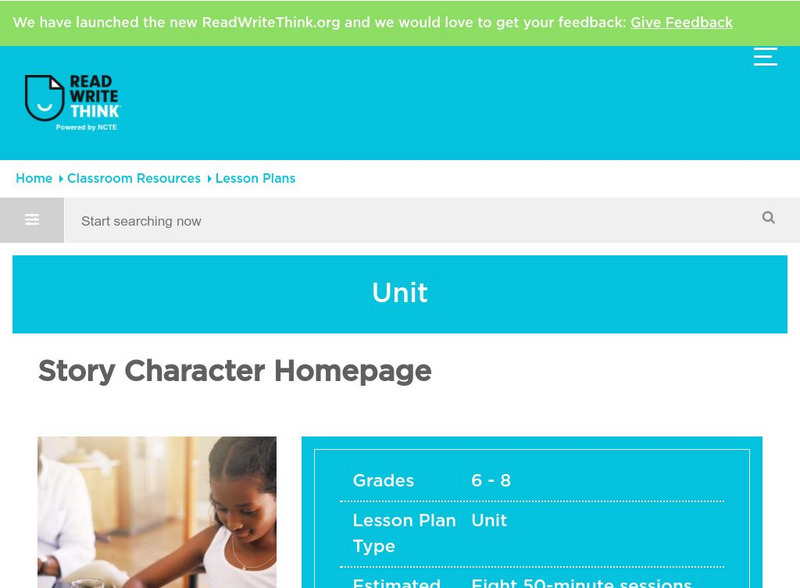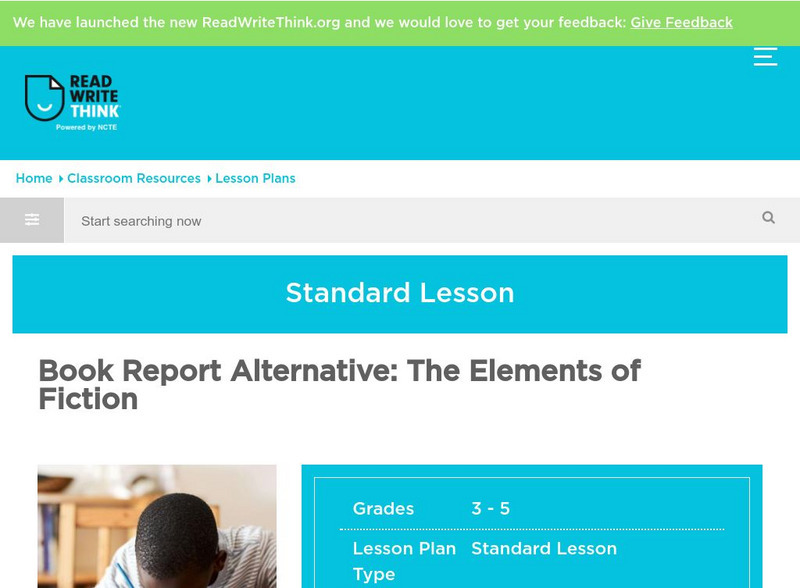Alabama Learning Exchange
Alex: Using Fairy Tales to Teach the Short Stories
Familiar fairy tales are used as guides to help middle schoolers analyze the elements of the short story: plot, theme, setting, point of view, and character.
Texas Education Agency
Texas Gateway: Analyze the Central Characters in Literary Text/fiction
In this lesson, students will learn some ways that writers reveal the complexity of their characters. By closely analyzing one author's characters, they will come to see how their words, actions, and interactions with one another can...
Texas Education Agency
Texas Gateway: Analyze Development of Plot Through Characters in Literary Text
[Accessible by TX Educators. Free Registration/Login Required] Often characters are a driving force behind the plot. In this lesson, students will learn how complex, multilayered characters contribute to the development of a story's plot...
Lumen Learning
Lumen: Reading and Interpreting Literary Texts: How to Analyze a Short Story
This lesson focuses on analyzing a short story including all of the elements of a short story such as setting, plot and structure, and characterization.
Other
Mo Dept. Of Ed.: Analyzing and Evaluating Literary Works
Lesson plan designed for eleventh graders. Young scholars analyze and evaluate a short story for elements of literary works such as theme, mood, word choice, imagery, tone, and main idea. Includes a student handout and a scoring guide....
Alabama Learning Exchange
Alex: Literary Elements in Literature
This instructional activity is applicable to any story or novel in literature. The students will be introduced to twelve literary elements through a podcast. They will then be divided into small groups to complete activities involving...
PBS
Pbs Learning Media: Literary Elements and Techniques: Symbolism
Explore how authors use symbolism to add a deeper level of meaning to their work in this short animated video [1:12] from WNET. Discussion questions below help students to further apply their understanding before analyzing a text.
Alabama Learning Exchange
Alex: Examining Character Motivation
During this unit, students will ask "Why do we do what we do?" They will read different novels to analyze character motivation. Throughout the unit they will debate whether they think characters made smart choices and why. They will also...
Houghton Mifflin Harcourt
Holt, Rinehart and Winston: Analyzing a Story's Theme [Pdf]
A short set of questions designed to help students consider and analyze the element of theme within a piece of literature. RL.9-10.2 and RL. 11-12.2 Analyzing Theme.
Houghton Mifflin Harcourt
Holt, Rinehart and Winston: Elements of Literature: Analyzing Setting [Pdf]
Use this graphic organizer for analyzing setting and its effect on the meaning of any story.
ReadWriteThink
Read Write Think: Story Character Homepage
Online activity which allows for students to create an electronic "Home page," for a specific character when reading a class novel. Students research and create web pages, then present findings to the class.
Other
Penn. Department of Education:comparing and Contrasting Different Versions
Comparing and contrasting is a higher-level thinking skill promoted in the Common Core Standards leading to the ability to comprehend and analyze texts through various topics and genres. This lesson on Comparing and Contrasting Stories...
ReadWriteThink
Read Write Think: Book Report Alternative: The Elements of Fiction
Analyzing a book takes the form of creating their own when students complete this activity. The stated goal is to help students "Read like writers." Includes link to a template for student use.
Houghton Mifflin Harcourt
Holt, Rinehart and Winston: Elements of Literature: Analyzing a Myth [Pdf]
A brief worksheet/organizer in which students can analyze the content of a given mythological story. Includes five questions and space for students answers and analysis.
Alabama Learning Exchange
Alex: Literary Elements in Jan Brett's the Mitten
Students will analyze such literary elements as plot, cause-effect relationships, sequence, and prediction in Jan Brett's The Mitten. Students will enjoy predicting upcoming story events and retelling the story from a dialogue that shows...
E Reading Worksheets
E Reading Worksheets: Indirect Characterizations Worksheet
In this learning module, students will practice analyzing indirect characterizations. A worksheet is provided to reinforce the concept. This module is designed to support Tier I, Tier II, and Tier III students.
ReadWriteThink
Read Write Think: Fairy Tales From Life
A guideline for helping students to write their own fairy tales. This is a fun activity that will help students to analyze a literary style and follow a pattern.
ReadWriteThink
Read Write Think: Using Picture Books to Teach Plot Development and Confict Res.
Students read picture books to explore the concepts of plot development and conflict resolution. They first learn about the connections between reading and writing, and then revise their own writing. CCSS.ELA-Literacy.CCRA.R.4
PBS
Pbs Teachers: The Hound of the Baskervilles
View, read and discuss Conan Doyle's tale, "The Hound of Baskersvilles," and compare and contrast the story with the film. Explore the genres and elements of mystery and suspense that are present, and analyze characters, especially...
Writing Fix
Writing Fix: Voice Building Poetry Lesson: Comparison & Contrast Poems
In this lesson, students examine multiple mentor texts to help drive them toward the final persuasive writing assignment: comparison and contrast poems written from a parent and a child's perspective. A short story, two poems, and a song...












![Holt, Rinehart and Winston: Elements of Literature: Analyzing a Myth [Pdf] Graphic Holt, Rinehart and Winston: Elements of Literature: Analyzing a Myth [Pdf] Graphic](http://content.lessonplanet.com/resources/thumbnails/410056/large/bwluav9tywdpy2symdiwmduymc03nzc3ltexmgnrbhyuanbn.jpg?1589985144)




